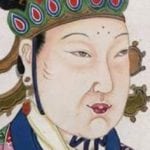 Weird Stuff
Weird Stuff  Weird Stuff
Weird Stuff  Mysteries
Mysteries 10 Tragic Disappearances and Deaths in Joshua Tree National Park
 History
History 10 Ways Childhood Really Sucked in the Old West
 Music
Music 10 Name Origins of Famous Bands from the 1990s
 Religion
Religion 10 Biggest Turnarounds by the Catholic Church
 Weird Stuff
Weird Stuff 10 Unbelievable Times Laws Had Unintended Consequences
 Humans
Humans Ten Historic Women Who Deserve Way More Credit Than They Got
 Movies and TV
Movies and TV 10 Films That Spawned Major Lawsuits
 History
History Ten Times Towns Were Wiped Off the Face of the Earth
 Creepy
Creepy 10 of the Most Disturbingly Haunted Public Houses in the UK
 Weird Stuff
Weird Stuff 10 Niche Subcultures That Are More Popular Than You Might Think
 Mysteries
Mysteries 10 Tragic Disappearances and Deaths in Joshua Tree National Park
 History
History 10 Ways Childhood Really Sucked in the Old West
Who's Behind Listverse?

Jamie Frater
Head Editor
Jamie founded Listverse due to an insatiable desire to share fascinating, obscure, and bizarre facts. He has been a guest speaker on numerous national radio and television stations and is a five time published author.
More About Us Music
Music 10 Name Origins of Famous Bands from the 1990s
 Religion
Religion 10 Biggest Turnarounds by the Catholic Church
 Weird Stuff
Weird Stuff 10 Unbelievable Times Laws Had Unintended Consequences
 Humans
Humans Ten Historic Women Who Deserve Way More Credit Than They Got
 Movies and TV
Movies and TV 10 Films That Spawned Major Lawsuits
 History
History Ten Times Towns Were Wiped Off the Face of the Earth
 Creepy
Creepy 10 of the Most Disturbingly Haunted Public Houses in the UK
10 Fascinating Madams From The USA’s First Brothels
At a time when women had few career choices, some were determined to make their own way, no matter what the cost. The most enterprising made the rise from prostitute to madam, and many of them were strong, singular women. Many gave back to their communities, raised families, loved, lost, and had tragic stories over the course of their lives.
10 Mother Damnable

Most of what we know about Mary Ann Conklin is hearsay and legend, which makes her an even more interesting character. According to the stories, she married a whaling captain named David “Bull” Conklin in 1851, but in 1853, he abandoned her in Port Townsend, Washington, and headed for Alaska. She settled in Seattle, where she became the manager of the Felker House, a hotel and brothel. It wasn’t long before she had a reputation for running a clean place with good food . . . and a reputation for swearing. Supposedly, she had learned to curse like a sailor during her time at sea and could swear in English, French, Spanish, German, Portuguese, and Chinese, reportedly earning her the nickname “Mother Damnable.”
She was such a larger-than-life character that the hotel became known as The Conklin House or simply Mother Damnable’s. Later, she was known as Madame Damnable, for obvious reasons.
There are some epic stories about her that show just how she ran her business. When the Seattle government set up in her establishment for a lynching trial, they asked for a receipt afterward. She was so outraged that she started throwing firewood at the officials, yelling at them that this was their receipt. She was said to keep rocks in her apron for throwing at people when yelling didn’t suffice, and she was always surrounded by dogs that were as hostile as she was.
Other historians suggest that her nickname didn’t just come from her language, but from her attitude and disposition as a whole. The name “Mother Damnable” has been assigned to various women throughout history, beginning in 17th-century England, and it was a term that was always associated with a witch or a madam.
Conklin died in 1873, but that wasn’t the end of her story. In 1884, graves in Seattle Cemetery were moved in preparation for turning the area into a park. Legend says that when they dug up Madame Damnable, her coffin was so heavy that they had to open it to see what was inside. Supposedly, she had turned to stone, thwarting even the worms that would have otherwise eaten her.
9 Belle Brezing
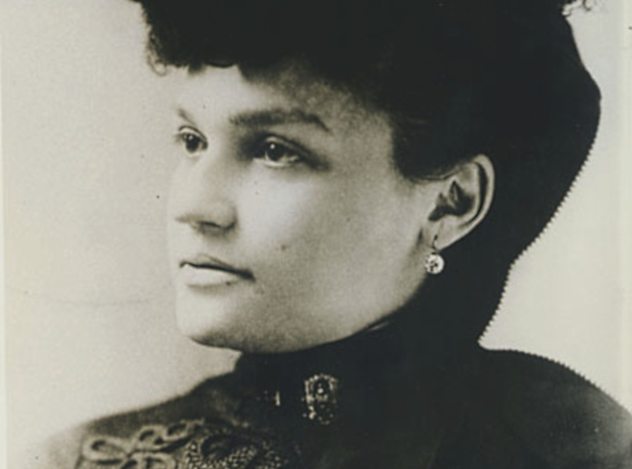
Born in 1860 in Lexington, Kentucky, as the illegitimate daughter of a prostitute, Brezing was involved with a 36-year-old man by the time she was 12, the legal age of consent in Kentucky at the time. She was abandoned by her lover in 1874, pregnant by 15, and married to one of her three known lovers in 1875. Brezing’s reputation took another turn for the worse when one of those lovers was found dead after being shot in the head with her mother’s gun. Although it was officially ruled a suicide, it wasn’t long before Brezing’s husband left town—and her—forever. Brezing had a daughter in 1876.
Sometime during the next two years, she began supporting herself and her daughter, Daisy Mae, by prostitution. In 1879, she was brought into a brothel operating out of a rather odd location—Mary Todd Lincoln’s childhood home. While she worked there, she was able to save enough money to open her own establishment two years later.
Over the next few years, she opened several houses and was arrested at least once, avoiding jail time with a convenient pardon from Kentucky’s governor. By the late 1880s, she was known nationwide for her girls and her houses, which took advantage of the major traffic that was brought to the city by its importance in horse trading and racing.
By 1898, she was catering to soldiers from the Spanish-American War and was immortalized in one of the most famous works of American literature from the era. Margaret Mitchell would use her as inspiration for Belle Watling in Gone with the Wind, after hearing stories about her from her husband, John, who was then working as a reporter in Lexington.
World War I spelled the end for most of the brothels in the area, and although some reopened after the war, Brezing’s never did. She died in 1940 of uterine cancer.
8 Eleanor Dumont

Eleanor Dumont was born Simone Jules but changed her name when she opened her first establishment, the Dumont Gambling Palace (and brothel) in Nevada City. She remained there for seven years before closing up shop and moving on to more lucrative pastures, something that she would do repeatedly.
In Bannack, Montana, Dumont got an unfortunate nickname that would stick with her for the rest of her life—Madame Mustache. After her time in Montana, she ran a brothel in Tombstone, Arizona, supporting herself and building her fortune largely through gambling, which she was as well-known for as she was for her growing mustache.
Dumont, by then very well-off, attempted to retire in 1872 and to settle down with a man who would try to take her life’s savings. It didn’t work out as planned for him, though; she followed him and claimed justice with a shotgun. She didn’t get her money back, but she made no secret of how glad she was that he was dead. She was never convicted and only confessed to the murder shortly before her own death.
Not long after her attempted retirement ended in bloodshed, Dumont died by her own hand, perhaps accidentally. She settled in Bodie, California, where her frequent drinking led to a downturn in her luck as a gambler. After borrowing $300 from a friend and losing it within a few hours, she drank a cocktail of claret wine and morphine. She was buried by her fellow gamblers, who remembered her as an honest woman who always played fair and paid her debts.
7 Ah Toy

For someone who had such an influence on society during the California Gold Rush, the life story of Ah Toy remains wonderfully mysterious. Even the spelling of her name is debated. It’s alternately Ah Toy, Achoi, or even Ah Choi.
We know that she came to San Francisco in 1849, a Chinese immigrant who paid for her own passage to the US. There were few options for female Chinese immigrants living in the western US in the late 19th century. Prostitution was one, and Ah Toy had something very, very important: She was not only beautiful, but she was exotic. The few records that exist suggest that when she first came to the US, she was able to charge one ounce of pure gold per encounter. A shrewd businesswoman, she saved her money and, within the year, recruited more girls from Hong Kong to work in her upscale, high-class San Francisco brothel.
Ah Toy wasn’t afraid to stand up for herself or her employees, appearing in court dozens of times and occasionally acting as counsel for girls who found themselves needing a lawyer. In 1852, she sued a man named Yee Ah Tye for attempting to extort her after he began threatening her in an attempt to get her girls to pay him a tax for the right to operate in the city. The newspapers, which were familiar with her, loved it.
Her protection in the courts would be short-lived, though, and in 1854, the California Supreme Court ruled that Chinese immigrants or people of Chinese descent could no longer testify in court. Luckily, Ah Toy was able to gradually become more of an entertainer than a sex worker, capitalizing on the exotic nature of her own appearance.
6 Mary Ellen Pleasant
Like Ah Toy, we don’t know much about Mary Ellen Pleasant. Much has been said, though, and even more implied. Without a doubt, there were many interesting facets to the life of the woman who was called one of the richest black women in America in the 1860s.
Pleasant’s mother told her that she was the daughter of a white plantation owner and belonged to a long line of “Voodoo Queens” from Santo Domingo. When she was 11, she was sold to a man in New Orleans, who sent her to a convent to be educated and then given her freedom. Much of her early life was spent traveling the East Coast, and by the 1840s, she and her husband, James Smith, were active in smuggling hundreds of slaves to freedom. She trained as a cook to infiltrate plantations, but when suspicions started to grow, she hopped on a ship, sailed around the world, and ended up in San Francisco. (Another version of the story has her getting to California via sailing to Panama, walking to the Pacific, and then taking a ship north.)
In San Francisco, Pleasant became the adviser to Thomas Bell, one of the directors of the Bank of California. Just what else she did has been up to speculation. According to some accounts, she groomed young women for marriage to wealthy men. Other stories have her running a chain of bordellos, claiming that she would invest in real estate and turn the buildings into boardinghouses. Those boardinghouses would be full of clients, and she reportedly set up women with wealthy white clients for a night or for a lifetime.
One of her “proteges” eventually married Thomas Bell. The gratitude was short-lived, however, as when Bell died in 1892, his wife threw Pleasant out onto the street. Pleasant had been living with them as their maid, although some reports suggest that they had been the ones living with her.
While Pleasant ran her businesses, she acted as a staunch abolitionist. In 1858, she contributed $30,000 to help fund John Brown’s raid on Harper’s Ferry, and she even took a streetcar company to court for refusing to let her sit. She won, and throughout the 1860s, her influence was undeniable. She was well-known (through rumors) as the person who could find someone a wife or find homes for the illegitimate children that came from extramarital dalliances.
5 Cora Crane
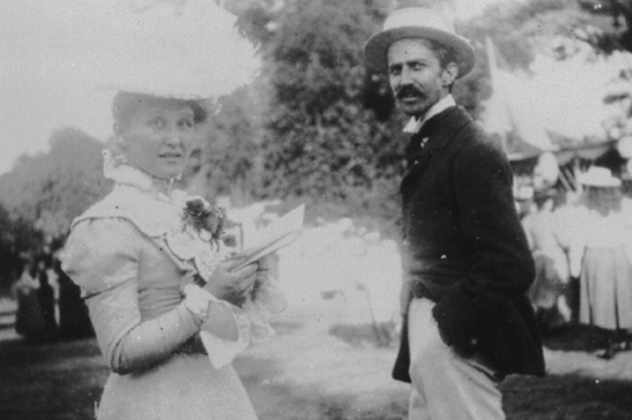
Before Cora Crane took Stephen Crane’s (author of The Red Badge of Courage) last name, she was Cora Ethyl Eaton Howorth. The Bostonian party girl went to New York City and eloped to England with a man who later disowned her once they got to Europe. Now called Cora Taylor, she showed up in Florida with a huge sum of money that no one could trace, bought a bordello, and settled in.
Not long after, Crane was in town, checking into a hotel and presumably meeting Cora. After leaving and heading for Cuba, his ship ran aground. Cora arranged for Crane to be brought back to her hotel. After nursing him back to health, she started to accompany him on his trips, calling herself Cora Crane even though she had never officially divorced the man with whom she’d previously run off to England. (The woman pictured with Crane above is believed to be Cora.)
When Crane died of tuberculosis, he left everything to her. With that, she built a massively successful 17-bedroom mansion in the heart of the red light district in Jacksonville, Florida. That was only her main establishment; she owned several other brothels.
When she married one of her frequent guests, Hammond McNeill, things started to go downhill. Her new husband continued seeing some of Cora’s girls, while a 19-year-old railroad man was showing interest in Cora, interest that her husband ironically didn’t approve of. Cora, not about to be told what to do by her cheating husband, hooked up with the teenage Harry Parker for a weekend. McNeill bought a gun, followed them, and killed the young man. The courts ruled that he had the right and had done his just duty in defending his wife and their family honor. (In a weird twist of fate, McNeill would be shot and killed by his second wife.)
Cora was shamed by the entire thing, retreating and calling herself only Stephen Crane’s widow. She died at 46 after suffering a cerebral hemorrhage from helping a young woman to push her car out of the sand.
4 Louise Wooster
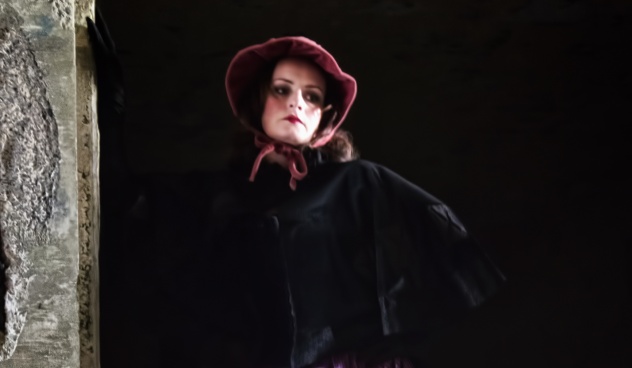
Louise Wooster was born in 1842. By 1857, her parents were dead, and she and her sisters were destitute. While the two youngest girls ended up in Protestant Orphan Asylum of Mobile, Alabama, Louise and her older sister went a different route. Wooster eventually ended up working for a brothel in Montgomery before moving to Birmingham and taking up the trade there.
In 1873, a cholera epidemic swept through the city, and Wooster gained massive popularity and some level of immortality from her actions. She and her girls nursed the sick back to health and prepared the dead—around 100 people—for burial, at a time when roughly half the city’s population left. In recognition of her bravery, an opera has been written about her, and an award has been named in her honor from the University of Alabama at Birmingham School of Public Health.
By the late 1880s, her selfless actions during the epidemic (and the location of her brothel near city hall and the police station) had helped her to build a considerable fortune. In 1911, her autobiography was released, featuring more fiction than truth. She told tales of affairs with wealthy and powerful men, drew comparisons between herself and Macbeth, and made claims that when she was younger, all she wanted was a loving husband and a little cottage.
It also includes a bizarre claim that historians can’t decide on the veracity of even today. Wooster claimed to have been the girlfriend of John Wilkes Booth, and she also claimed that he survived long after his reported death. At the time, the claim, at least of her involvement with the assassin, was taken seriously enough that it warranted an interview with the Chicago Times. The article, along with other clippings and photos, was saved in her scrapbook, which made its way to the Birmingham Historical Center in 2012. Also in the scrapbook were claims of her continued communication with him for up to two years after his supposed death. Wooster claimed to have met him when he was an actor while she working in Montgomery as a prostitute in 1860, which is entirely possible.
3 Lulu White
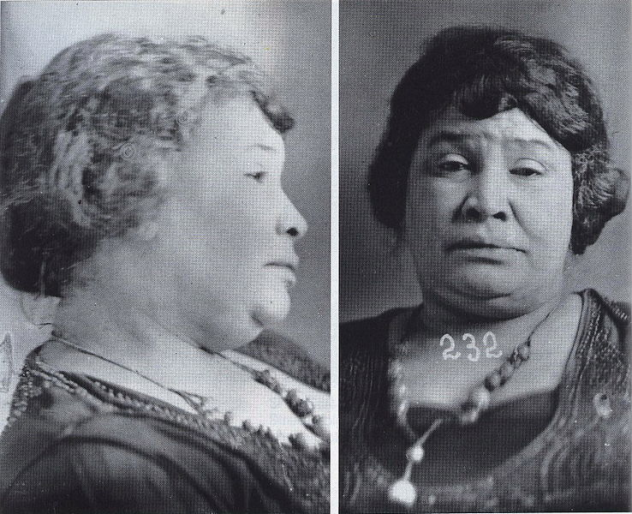
Lulu White was one of the most notorious madams who found their fortune and glory in New Orleans’s Storyville. When prostitution was outlawed everywhere in the city except for Storyville, the entire area was turned into a hotbed for sin, sex, drinking, and any other vice that you can think of.
White alternately claimed to be from Alabama, Cuba, or Jamaica, but she was really born in Alabama in 1868. Her fame started to skyrocket in the 1880s when she posed for a series of rather pornographic pictures, banking on her mysterious background to help sell her photos. The first mention of her working in the city’s brothels came in 1888.
In 1894, White opened Mahogany Hall. By then, she had created a persona for herself as the “Diamond Queen” (supposedly the owner of the largest private collection of diamonds and gemstones in the South) and continued exploiting the exotic. She advertised all of her girls as being one-eighth black (referred to as “octoroons”). By doing so, she was absolutely and very vocally going against the enacted and enforced Jim Crow laws.
White had a reputation as running a high-class place, full of mirrored ceilings and walls, dancing girls, and clients drinking champagne. Not surprisingly, she was a target of the law, arrested repeatedly for relatively minor offenses like selling liquor without a license. Storyville came to an end in 1917, and in 1918, White was arrested again for violating the Draft Act by running a brothel too close to a military institution. After three years in jail, she secured a pardon from President Wilson and opened up her business again. She ran it until she died in 1931.
2 Julia Bulette
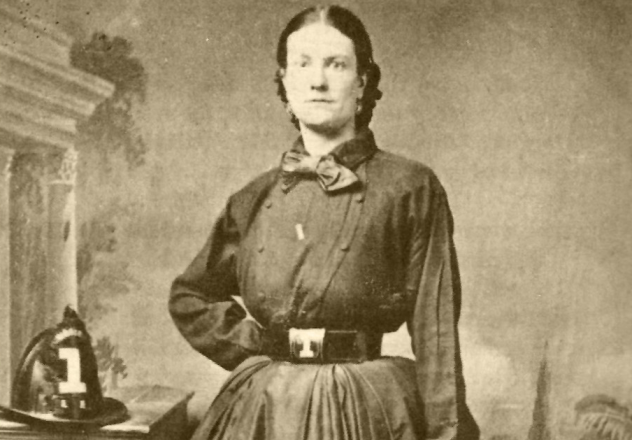
When silver was unearthed at the Comstock Lode, the following silver rush brought with it not only miners, but enterprising women who knew how to make a fortune from men giddy with visions of wealth. Julia Bulette arrived in Virginia City, Nevada, in 1863. She’d already paid her dues as a prostitute, and when she got to the city, she set up her own shop.
Even though there has been a fair bit of fiction written about Bulette—even during her own lifetime—we do know that she was more than just a stereotypical prostitute. She was well-known in the fire company and would often respond to calls with them, working the brakes of the hand pumpers. She also acted as a nurse and tended soup kitchens. At the same time, she reportedly charged $1,000 a night for her company. Those earnings eventually allowed her to build her own high-class brothel, Julia’s Palace. She brought in girls from San Francisco and served the best French wines and cuisine.
In 1867, Bulette’s maid found her lifeless body. She had been bludgeoned and strangled, and the entire city shut down as a sign of mourning. Fire companies, local militias, and thousands of mourners turned out for her funeral. A year after her murder, a French drifter named John Millain was found guilty of killing her and was hanged, in spite of his insistence that he was innocent. Mark Twain was one of the witnesses at his execution.
1 Dora DuFran
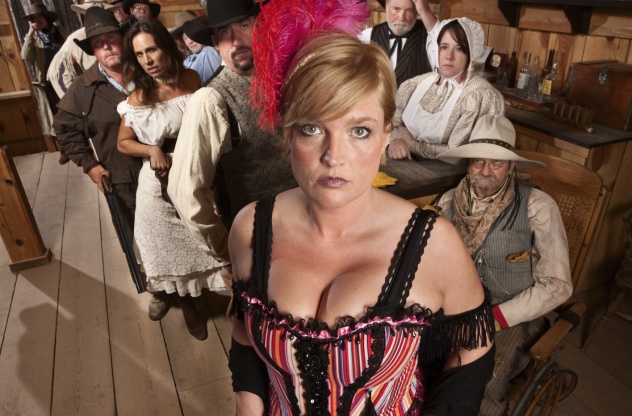
Dora DuFran was born Amy Bolshow in England, sometime in the mid-1870s. While it’s not certain whether or not she was ever a prostitute herself, she was known to have owned and run four brothels. We only know the name of one of them for sure, and it’s possibly the best name for a brothel ever—Diddlin’ Dora’s.
Diddlin’ Dora’s was in Belle Fourche, South Dakota, and DuFran advertised it with the slogan, “Three D’s—Dining, Drinking and Dancing—A Place Where You Can Bring Your Mother.” That may have been true of the lower level, perhaps, but the upstairs was reserved for her girls and their clients, an occupation that was commemorated by the little devils depicted dancing on the urns that decorated her eventual grave.
DuFran also owned establishments in Deadwood and Rapid City, where she was known for her charity work. She donated a huge amount of money to those in need, often offering up her rooms to the sick and the struggling. She was known for her surprisingly good relationship with her husband, Joseph, who is buried beside her and her pet parrot in a family plot.
She was also good friends with Deadwood’s famous Calamity Jane. When Jane was on her final downhill slide, DuFran hired her as a maid and housekeeper. When Jane died in 1903, she left from Diddlin’ Dora’s. After Jane’s death, DuFran released a pamphlet on her final days, called the “Lowdown on Calamity Jane,” where she painted a picture of Deadwood much as we know it now—a rough frontier town where people were made by the things that they needed to do to survive.
She didn’t pull any punches, either, presenting not just an honest picture of Deadwood, but of one of the Wild West’s most infamous women. DuFran wrote, “It is easy for a woman to be good who has been brought up with every protection from the evils of the world with good associates. Calamity was a product of the wild and woolly West. She was not immoral, but unmoral.”



